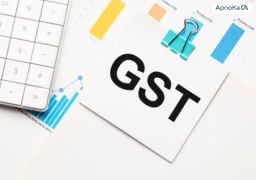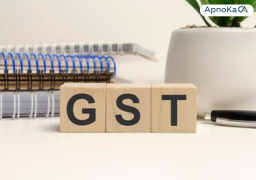# indiantaxlaw
12 posts in `indiantaxlaw` tag
.png)
Big Tax Change: No TCS Collection Under Section 206C(1H) from April 2025
Significant updates in TCS regulations: From April 1, 2025, Section 206C(1H) will be repealed. A comprehensive guide outlining the effects on sellers and buyers, necessary compliance actions, and required system modifications for businesses.
.jpg)
CBDT’s New Form 49C Rules: Stricter Tax Compliance for Non-Residents in India
Stricter guidelines have been implemented by the Central Board of Direct Taxes (CBDT) for foreign nationals submitting Form 49C in India. Enhancing openness and guaranteeing adherence to tax regulations are the goals of these modifications. Important changes include more stringent penalties for non-compliance, obligatory digital filing, and expanded disclosure requirements. In order to prevent fines and operating delays, non-resident businesses are now required to keep proper records and follow more stringent filing deadlines.
.jpg)
Real Estate and NRI Taxation: Budget 2025’s Impact on TDS and 182-Day Rule
Budget 2025 is expected to include major improvements, including streamlining TDS on property transactions and modifying the 182-day criterion for defining residence. This blog digs into the existing issues that NRIs experience, suggested remedies, and the projected advantages of these reforms, which seek to make tax compliance easier and more transparent.
.jpg)
A Complete Guide to Preventing Tax Notices for NRIs
can be difficult to manage income tax as an NRI, and even small mistakes could result in tax notifications. The top 5 tax notifications that non-resident Indians (NRIs) frequently receive are highlighted in this blog. These notices include non-filing of returns, income mismatches, unreported income, suspected tax evasion, and faulty returns. It offers helpful advice on how to prevent these letters, including timely filing, correct income declaration, making use of DTAA advantages, and speaking with tax experts. NRIs may guarantee hassle-free tax compliance and steer clear of fines by being proactive and knowledgeable.

Leveraging Sections 54 and 54F for Tax Exemptions in Property Transactions
This blog explores Sections 54 and 54F of the Indian Income Tax Act and explains how they exempt individuals and HUFs from paying taxes on capital gains when they reinvest them in residential real estate. To ensure clarity for taxpayers, the essay also discusses frequent disagreements, court rulings, and helpful advice for claiming exemptions.
Understanding Section 139(5) of the Income Tax Act: A Comprehensive Guide
A thorough explanation of Section 139(5) of the Income Tax Act can be found in this blog post. It describes what a defective return is, how to fix a defective return, and the possible repercussions of filing a defective return. Taxpayers can guarantee compliance with income tax legislation and prevent penalties by being aware of Section 139(5).
.png)
Form 1 of DTVSV 2024: Online Filing, Deadlines, and Penalties
Form 1 for the Declaration of Taxable Value of Securities (DTVSV) 2024 is now available for online submission. By October 31, 2024, taxpayers who own securities as of March 31, 2024, must submit this form. Up to December 31, 2024, a late return may be submitted; however, there will be a ₹1,000 penalty. In the event that the form is not submitted by the stipulated deadline, there will be a penalty of ₹10,000 and potential interest on unpaid taxes. Find out how to easily file Form 1 online and make sure you're following the DTVSV rules.
.jpg)
Knowing the Income-tax Act of 1961's Section 2(22): Deemed Dividends and Their Consequences
The Income-tax Act, 1961's Section 2(22) discusses the idea of presumed dividends and makes sure businesses don't evade taxes by giving shareholders advances or loans in lieu of dividends. This area affects the financial health of a corporation as well as dividend taxes. To ensure financial stability and compliance with tax laws, become aware of the important clauses and their implications.
.jpg)
Comprehending Income Tax Act Section 115JB: Minimum Alternate Tax (MAT)
The Income Tax Act's Section 115JB establishes the Minimum Alternate Tax (MAT), which makes sure businesses pay a minimum tax even when they take advantage of exemptions and deductions. The goal of MAT, its applicability to both domestic and international businesses, its calculation method, the credit system, and important modifications such as exclusions for businesses falling under Sections 115BAA and 115BAB are all covered in this blog. It also looks at MAT's function in maintaining tax equity, particularly for companies with high book earnings but low tax obligations.
.jpg)
Understanding Section 39 of the Income Tax Act: Powers of Tax Recovery and Asset Attachment
Tax authorities may seize and sell a taxpayer's assets in order to collect unpaid taxes, according to Section 39 of the Income Tax Act. Additionally, recovery against other parties holding assets on behalf of the taxpayer is permitted under this clause. To make sure taxpayers understand their obligations and the repercussions of tax defaults, the blog examines the essential components, recovery procedure, and consequences for non-compliance.

FY 2023-24 Income Tax Audit Simplified
The income tax audit process for FY 2023-24 can be challenging, but with the right preparation, businesses and individuals can manage it effectively. This blog explores who is required to undergo an audit, how to prepare by gathering essential documents like Form 16 and Form 26AS, and the steps involved in the audit process. Engaging a Chartered Accountant (CA) is key to ensuring compliance with tax regulations. The audit process also provides opportunities for improving financial record-keeping, tax planning, and dispute resolution. This guide offers insights into navigating the audit process confidently.

Section 194R of the Income Tax Act: A Complete Guide
The Income Tax Act's Section 194R, which addresses the tax deduction at source (TDS) on payments made to resident contractors or professionals, is covered in detail in this blog. It goes over the main points of the section, such as the tax rate, exemptions, threshold amount, and penalties for not complying. The blog also gives advice on how to ensure compliance and offers insights into the real-world applications of Section 194R.
